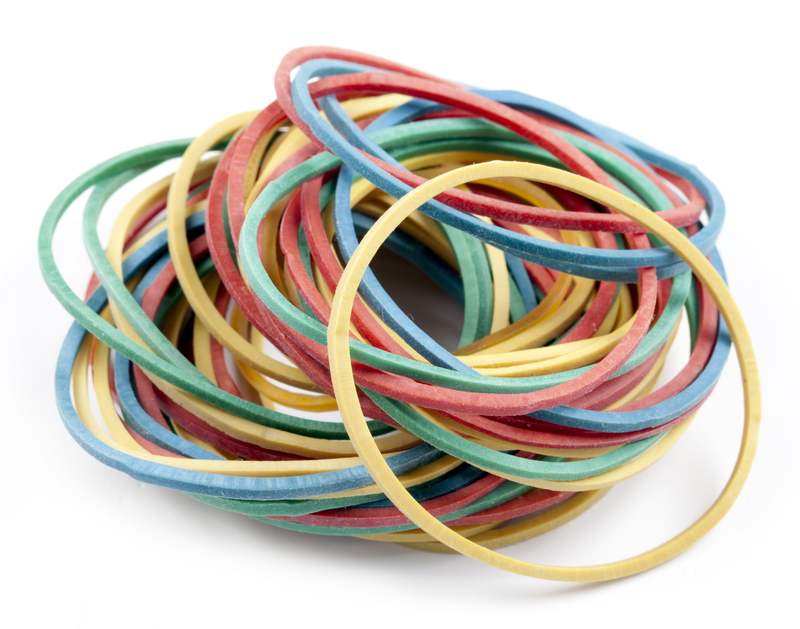Cardboard Disposal Strategies to Improve Packaging Sustainability
Effective cardboard disposal strategies are paramount for enhancing the sustainability of modern packaging solutions. As online shopping and shipping continue to surge, managing cardboard waste responsibly becomes critical in shaping a greener future and reducing environmental impacts. This comprehensive guide delves into the best methods and practices for cardboard disposal and explores how these sustainable packaging approaches benefit businesses, consumers, and the planet alike.

Why Cardboard Disposal Matters for Packaging Sustainability
Cardboard is one of the most widely used packaging materials globally due to its versatility, affordability, and recyclability. However, improper disposal can lead to increased landfill waste, loss of recyclable resources, and higher greenhouse gas emissions. Implementing smart cardboard disposal methods addresses these concerns by:
- Reducing the volume of landfill waste
- Conserving natural resources such as trees and water
- Lowering energy consumption required for new cardboard production
- Supporting the circular economy via closed-loop recycling processes
- Minimizing environmental pollution from packaging materials
With the right strategies, businesses and individuals can significantly improve packaging sustainability and embrace more eco-friendly operational models.
Understanding the Cardboard Lifecycle
To grasp the importance of responsible disposal, it's essential to consider the cardboard lifecycle. Cardboard is typically made from processed wood pulp and can be recycled up to 7 times before the fibers degrade. Optimizing cardboard waste management ensures the material's value is retained for as long as possible, reducing the demand for virgin resources.
There are two main types of cardboard used in packaging:
- Corrugated cardboard: Recognizable by its fluted, layered structure. Widely used for shipping boxes.
- Paperboard (carton): Thinner, flat, and used for cereal boxes, shoe boxes, and lightweight packaging.
Both types are highly recyclable when free of contaminants.
Top Cardboard Disposal Strategies
Adopting effective disposal strategies for cardboard is essential for both businesses and households. Below are powerful approaches that can be leveraged to make packaging more sustainable:
1. Source Separation at the Point of Disposal
- Separate cardboard from general waste: Create distinct bins or collection points for cardboard materials. This reduces cross-contamination and increases recycling rates.
- Educate staff and consumers about the importance of source separation with clear signage and instructions.
2. Breakdown and Flatten Boxes
- Flatten cardboard boxes before disposal to save space in recycling bins or compactors.
- Remove packing materials such as plastic wrap, foam, or tape to avoid contamination.
3. Partner with Local Recycling Centers
- Identify authorized recycling facilities that accept cardboard waste in your community or region.
- Schedule regular pickups for businesses that generate large quantities of cardboard.
4. Engage in On-Site Cardboard Compaction
- Invest in compactors or balers to compress cardboard into manageable bales, making storage and transport more efficient.
- Compressed cardboard reduces hauling costs and increases the value for recycling centers.
5. Explore Cardboard Reuse Opportunities
- Repurpose undamaged cardboard boxes for repeated shipping or storage needs.
- Encourage creative reuse, such as using boxes for DIY projects, moving, or as material for donations.
6. Compost Cardboard Where Applicable
- Certain types of unwaxed, uncolored cardboard can be composted in industrial or home composting systems.
- Shred or tear cardboard for quicker decomposition and to balance carbon content in compost piles.
7. Emphasize Producer Responsibility and Take-Back Programs
- Encourage manufacturers to implement take-back schemes where packaging is returned for recycling.
- Support Extended Producer Responsibility (EPR) legislation promoting sustainable packaging and waste reduction.
Maximizing Cardboard Recycling Efficiency
Recycling is at the core of sustainable cardboard waste management. To maximize efficiency:
- Educate all stakeholders--including employees, consumers, and logistics partners--about the importance of recycling and best practices.
- Avoid contamination with food, oil, or hazardous materials, as these can render cardboard unrecyclable.
- Label recycling bins clearly and place them in accessible, high-traffic locations.
- Monitor and analyze waste streams regularly to identify areas for improvement and further reduction.
Best Practices for Businesses
For businesses in logistics, retail, or e-commerce, integrating advanced cardboard disposal strategies can lead to significant environmental and financial benefits:
- Audit packaging use regularly to identify opportunities to downsize or switch to reusable packaging where possible.
- Centralize collection points to streamline sorting and pickup.
- Negotiate with recyclers for better rates when supplying high-quality, uncontaminated cardboard bales.
- Share metrics and achievements--publicizing sustainable initiatives can improve brand reputation and foster customer loyalty.
Overcoming Challenges in Cardboard Disposal
Despite the potential of cardboard recycling, several challenges may arise:
- Contamination: Cardboard soiled with food, chemicals, or excessive tape can disrupt processing.
- Improper sorting: Mixing cardboard with other recyclables or trash diminishes recovery rates.
- Infrastructure limitations: Not all areas have established, efficient recycling or composting options.
- Lack of consumer awareness: Education and engagement are key in driving behavior change.
To overcome these obstacles, stakeholders need ongoing training, infrastructure investments, and supportive policy frameworks.
Emerging Innovations in Cardboard Disposal and Packaging
With sustainability targets becoming central to business agendas, new technologies and innovations are evolving in the packaging sector:
- Smart packaging designs that minimize material use while maintaining structural integrity.
- Development of water-based inks and adhesives to enhance recyclability.
- Automated sorting and detection systems using artificial intelligence at recycling facilities.
- Biodegradable and plant-based coatings replacing traditional plastic linings, allowing more cardboard to be composted after use.
By staying ahead with these trends, organizations can improve cardboard disposal practices and reduce their environmental footprint.
The Role of Consumers in Cardboard Disposal Strategies
Consumers play a pivotal role in cardboard disposal and packaging sustainability.
- Choose products with minimal, recyclable, or compostable packaging wherever possible.
- Follow local recycling guidelines for cardboard--some cartons, like pizza boxes, may not be recyclable if contaminated.
- Advocate for packaging take-back programs at the brands and retailers you patronize.
- Share positive disposal habits with family and friends to expand impact.
Case Studies: Success Stories in Cardboard Disposal
Case Study 1: E-Commerce Retailer's Closed-Loop Recycling
A leading e-commerce company implemented a closed-loop cardboard recycling system in their distribution centers:
- All incoming packaging is separated and baled on site.
- Baled cardboard is sent to partner mills, where it's used to make new boxes.
- Result: 95% reduction in cardboard waste sent to landfill and reduced costs on purchasing new corrugated cardboard.
Case Study 2: Community Composting Initiatives
Several municipalities have piloted community composting programs specifically targeting clean cardboard waste:
- Residents drop off cardboard at designated sites after removing contaminants.
- Shredded cardboard is used to balance carbon in large-scale composting operations.
- High-quality compost is distributed to local farms and gardens, closing the sustainability loop.
Case Study 3: Small Business Creative Reuse
A local bookstore collects used cardboard boxes from shipments and offers them for free to customers during moving season. This simple act maximizes reuse and builds community goodwill.

Frequently Asked Questions About Cardboard Disposal
Is all cardboard recyclable?
Most cardboard is recyclable, but contaminated cardboard, such as those with oil stains (like greasy pizza boxes) or heavy plastic coatings, may not be accepted by recycling facilities.
How can I tell if cardboard is compostable?
Uncoated, plain brown cardboard (without wax, heavy dyes, or plastic) can usually be composted, especially if shredded. Always check local regulations.
What should I do with packing tape and labels?
Remove all tape, plastic labels, and non-cardboard components before recycling. Small amounts left on are often removed during industrial processing, but best practice is to minimize contamination.
Conclusion: Future-Proofing Packaging With Cardboard Disposal Strategies
Adopting eco-friendly cardboard disposal strategies is no longer optional for forward-thinking businesses and environmentally conscious consumers. By prioritizing effective collection, separation, reuse, and recycling methods, it's possible to make packaging sustainability a reality and significantly reduce waste footprints. For businesses, the shift not only fulfills corporate social responsibility but also improves efficiency and appeal to modern consumers.
By continually striving for innovation in packaging disposal and promoting responsible consumer behavior, we can ensure that cardboard--one of the world's most valuable packaging resources--remains part of a sustainable, circular economy well into the future.
Key Takeaways
- Separate, flatten, and remove contaminants from all cardboard before recycling.
- Engage with and educate all stakeholders--including employees and customers--about proper disposal.
- Support innovations that make more cardboard types recyclable or compostable.
- Reuse cardboard wherever possible before disposal.
- Work with local recycling and composting programs to maximize sustainability impact.
Cardboard disposal strategies are a cornerstone of sustainable packaging solutions. Implement these best practices today to contribute to a cleaner environment and a more efficient future for packaging sustainability.



